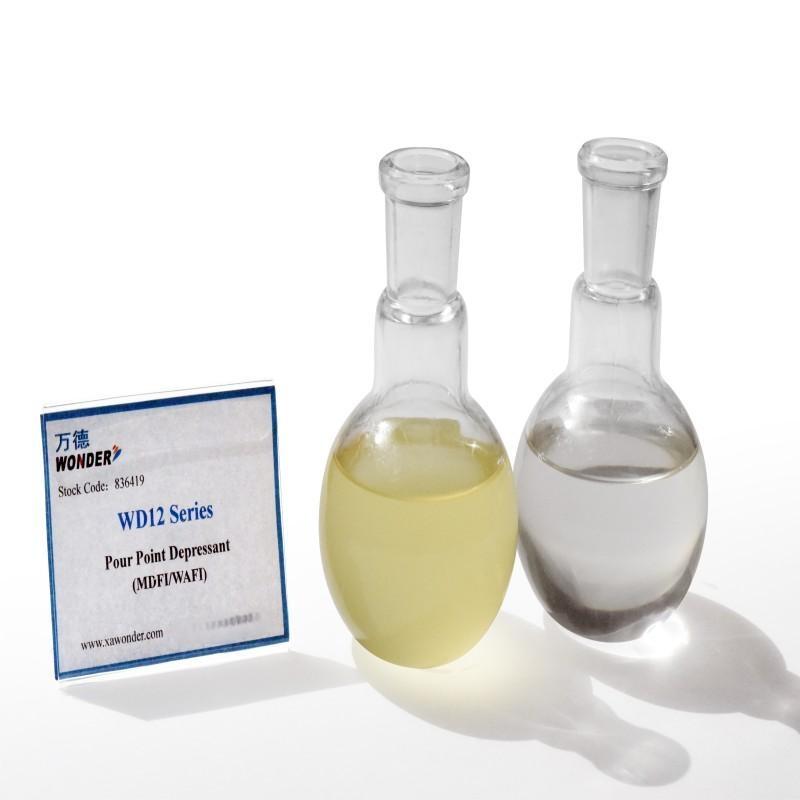-
Categories
-
Pharmaceutical Intermediates
-
Active Pharmaceutical Ingredients
-
Food Additives
- Industrial Coatings
- Agrochemicals
- Dyes and Pigments
- Surfactant
- Flavors and Fragrances
- Chemical Reagents
- Catalyst and Auxiliary
- Natural Products
- Inorganic Chemistry
-
Organic Chemistry
-
Biochemical Engineering
- Analytical Chemistry
-
Cosmetic Ingredient
- Water Treatment Chemical
-
Pharmaceutical Intermediates
Promotion
ECHEMI Mall
Wholesale
Weekly Price
Exhibition
News
-
Trade Service
OPEC's monthly report released on Monday (November 14) once again lowered its growth forecast for global crude oil demand in 2022, which is also the fifth time OPEC has lowered its oil demand forecast
for this year.
Affected by this, international crude oil prices fell
significantly yesterday.
At the same time, the price of domestic crude oil futures fell simultaneously
.
According to Yang An, head of Haitong Futures Energy R&D Center, the main reason for the sharp drop in international oil prices is that the recent authoritative institutions have continued to reduce their expectations for the demand side of the crude oil market, before the US Energy Agency directly lowered the global crude oil demand growth forecast in 2023 by 320,000 barrels / day to 1.
16 million barrels / day, once poured cold water on the market, and OPEC also lowered the forecast for world oil demand growth for the whole year of 2022 to 2.
55 million barrels / day on the evening of the 14th, which further hit market sentiment.
Recent signs of easing geopolitical factors, including Russia and Ukraine, have also affected investor expectations, and the crude oil sector has become the weakest performing sector in the commodity market
.
"From the perspective of the unilateral trend of the outer crude oil plate and the near monthly difference, the recent near monthly difference is weakened as a whole, but the unilateral side of the disk has a significant rebound and then falls, which shows that the unilateral trading logic of the disk is more around the expected change, the early plate rebound is the future supply and demand expectations of the transaction, the recent decline is naturally the correction
of the future supply and demand expectations.
" The revision mainly comes from two aspects, one is the revision of the marginal improvement expectation of the macro situation at home and abroad, and the other is the revision of the demand forecast due to OPEC's downward revision
of the crude oil demand outlook.
Guohai Liangshi futures analyst Zhang Zhengze said
.
Domestically, Yang An said that SC crude oil futures have recently been affected by the exchange rate, and as the high of the US dollar has fallen, the RMB has appreciated sharply, making SC crude oil the weakest benchmark crude oil
in recent times.
In fact, OPEC has lowered its demand forecast several times this year, more than
1 million b/d compared with the demand forecast at the beginning of the year.
In this regard, Dong Chao, senior analyst of Shenyin Wanguo Futures Energy, believes that there are three main reasons, one is that the average oil price for the whole year is higher than expected, which has led to a decline
in demand.
Second, the damage to the global economy caused by successive sharp interest rate hikes, especially at the end of the interest rate hike, is the most serious time for the superposition effect, which will also have a greater impact
on demand next year.
Third, China's demand has also declined
.
The sum of the three is far greater than the substitution effect caused by the lack of natural gas in Europe, which has led OPEC to cut demand forecasts
several times.
Yang An said that OPEC's move to lower its crude oil demand outlook was later than that of the International Energy Agency and the U.
S.
Energy Agency, which may be based on OPEC's generally more cautious adjustment of demand from its perspective as a seller, but as the downward pressure on the global economy increases in the second half of this year, OPEC has gradually and continuously lowered its crude oil demand forecast
.
In Zhang Zhengze's view, the continuous promotion of overseas interest rate hikes at the macro level is the main reason
why OPEC has successively lowered demand expectations.
He said that although the US inflation data has fallen recently, the market believes that the follow-up rate hike is around 100 basis points, and up to three more rate hikes will be completed by March next year
.
However, this view may be too optimistic about the end and timing of interest rate hikes, from the perspective of house prices leading to rents for more than 1 year, the extent of this strong interest rate hike leading to the weakening of the US economy is still limited, so the probability of raising interest rates is a longer-term action
.
Against this backdrop, in the future, as the US manufacturing PMI begins to fall back below the withering line, the current resilient diesel demand will also weaken
significantly.
Although OPEC has successively lowered its demand forecast, there are still international investment banking institutions such as Goldman Sachs who are firmly bullish on international oil prices
.
Jeff Currie, head of global commodities at Goldman Sachs, said Europe is not yet out of the energy crisis and oil prices are expected to soar
before early next year.
Jeff Currie said in an interview with the media on Monday that as the entry into force of the EU ban on Russian oil gets closer and closer, Western countries are also close to reaching the upper limit of Russian oil prices, and oil supply shortages may become a future problem
.
If Russia retaliates against the price cap, oil prices could be pushed higher
.
He added that other factors will exacerbate the oil supply shortage, such as a slowdown in U.
S.
shale production and a halt to the release of oil
from the U.
S.
Strategic Petroleum Reserve.
The Biden administration has been using the Strategic Petroleum Reserve since May to curb high oil prices
.
In Zhang Zhengze's view, Goldman Sachs is more bullish on oil prices or based on the logic
of the supply side.
He said that in the context of OPEC+ determined to start cutting production by 2 million barrels / day in November, and the actual production reduction reached at least 1 million barrels / day, the international crude oil balance sheet in the fourth quarter was at least a state of tight balance between supply and demand, which led to the financial break-even point support effect of $80 / barrel in OPEC+ major oil producing countries is still there, and the basis for rising is still there
.
Dong Chao believes that the main logic of Goldman Sachs' bullish crude oil lies in two points, the European energy crisis is not over and Russia may impose an embargo
on countries that sanction it.
"On the first point, Europe's winter natural gas reserves have reached the standard, and they have made up for this deficiency by a variety of means, and Europe's crude oil substitution effect due to clean energy regulations is limited, at least until the end of this winter
.
As for the issue of sanctions, the core issue is still the specific price of the price limit between Europe and the United States to Russia, if the price is too low, it may lead to a certain production loss, but considering that Russian crude oil has accelerated to the Asia-Pacific region, this part of the loss will not exceed 500,000 barrels / day, if the price is right, Russian crude oil production will even increase
.
Therefore, oil prices will most likely not rush to $115 per barrel
as Goldman Sachs said.
He said
.
"At present, the inventory pressure in the crude oil market is not large, and the tight supply-side situation will continue for some time to come, which is the core driver
of institutional bullish oil prices.
" However, at this stage, investors are depressed under the impact of recent weak demand data, and oil prices are weak.
Overall, it is an objective fact that the supply is tight in the next period after OPEC production cuts and the end of the US strategic crude oil release, in this case, oil prices do not have the conditions for a sustained sharp decline, but whether it can become stronger depends on the recovery of
market confidence.
For the future market, what are the main factors affecting international oil prices? Will there be a directional breakthrough in oil prices? In this regard, Dong Chao believes that the market needs to pay attention to the pace of the Fed's interest rate hike, the actual production reduction of OPEC and the sanctions imposed by Europe and the United States against Russia, and the probability of oil prices is still range oscillation
.
Yang An believes that oil prices are still in a relatively high price area, on the basis of OPEC production cuts on oil prices, macro level Fed interest rate hikes to the market brought a negative impact has eased, but the global economic downward pressure is still huge, weak demand performance will limit oil price performance, in the absence of unexpected supply interruption event risk, oil prices upward driving is insufficient
.
On the whole, oil prices are likely to remain in a high range
.
"Oil prices will continue to maintain a wide range of oscillations until the expectation of OPEC+ production cuts on the supply side and the expectation of
diesel demand on the demand side to 'collapse' due to continued interest rate hikes cannot be falsified.
" At present, the demand side is more of a slow variable, and the breakthrough of the range may still be caused by the falsification of supply-side expectations or other unexpected circumstances, such as the follow-up OPEC+ production reduction is less than expected and Russia's response after the European and American sanctions on Russian oil
.
Zhang Zhengze said
.
The contradiction on the cost side is prominent, and the high and low fuel oil follows the lower
With the fall of domestic and foreign oil prices, the domestic energy and chemical sector has all declined
.
Yesterday, high and low fuel oil and asphalt fell significantly, of which the high fuel oil RU main 2301 contract closed down 2.
45% at 2829 yuan / ton, the low fuel oil LU main 2301 contract fell 3.
93% to close at 4639 yuan / ton, and the asphalt main 2301 contract fell 2.
92%.
In the view of Du Bingqin, an analyst at Everbright Futures, yesterday's fuel oil futures mainly fell
with domestic and external oil prices.
She said that since last week's collective rise, the risk appetite of the external financial market has fallen recently, driving crude oil and other risk assets to fall sharply, coupled with OPEC's latest monthly report to lower the forecast of global oil demand growth this year to 2.
55 million barrels per day, reflecting that the market is still not optimistic
about economic growth and oil demand prospects.
"Fuel oil futures FU and LU have fallen sharply, and we believe that the short collapse of costs is still the main contradiction, which has little to do with their own supply and demand
.
" Affected by the correction of crude oil prices, SC fell first among commodities, oil products fell almost across the board, and FU fell even relatively little
.
Huang Liunan, senior researcher at Guotai Junan Futures, said
.
According to Huang Liunan, from the perspective of fuel oil itself, the recent overall trend of high sulfur and its components is relatively low sulfur, or related to the strong demand for power generation in winter in the Middle East, and also related to
the future Russian oil ban will reduce the supply of high sulfur.
At the same time, with inventories of all types of oil products in the United States at historic lows, the possibility of North American refiners importing high sulfur significantly as a supplement to refining feedstock is gradually increasing
.
For the future market, Huang Liunan believes that the fragile tight balance of European natural gas and the high price and low inventory pattern of the European diesel market will still give low sulfur a strong potential benefit, once the low winter temperature in Europe leads to another rise in natural gas prices, or the northern hemisphere refineries have an unexpected negative decline, low sulfur can still be significantly strengthened
again.
But at the same time, the adequacy of Europe's natural gas resources still depends on the weather, and if Europe ushers in a warm winter, then gas prices may continue to fall and hit
LU.
At the same time, market sources said that China's fifth batch of low-sulfur export quotas have been issued at the end of September, this quota volume is equivalent to one-half of the current Singapore fuel oil inventory level, if the quota volume is completely landed and flows into the Asia-Pacific market, it is likely to trigger a weakening of low-sulfur market prices, which requires continuous attention
.
Du Bingqin believes that from a fundamental point of view, the current high and low sulfur market structure is generally stable, and the directional drive is not obvious
.
Among them, in terms of low sulfur, the inflow of goods from the West is limited due to high freight rates and the closure of the East-West arbitrage window, but the number of low-sulfur arbitrage cargoes in November is still expected to be higher than in October, while the production of low-sulfur fuel oil from Asia-Pacific refineries is also rising
.
In addition, the recent accumulation of the world's three major ports may put some pressure
on the market.
However, there may be some expected positive expectations on the demand side, and with winter approaching, winter power generation demand in Japan and South Korea will also provide some support
to the market in the coming weeks.
The fundamentals of the high-sulfur fuel oil market have been slightly solid in the recent week, but the overall performance is still relatively flat, and Singapore's high-sulfur fuel oil supply remains abundant
as the inflow of goods from Russia will remain stable.
"From the current high and low sulfur fundamentals, the directional driving force of absolute prices is not obvious, and in terms of relative strength, the structure of low sulfur that was significantly stronger than high sulfur may remain slightly narrowed
.
" Du Bingqin said
.
Huang Liunan said that from the perspective of crude oil on the cost side, under the pattern of low inventory and low supply, the upside risk of oil prices still exists, and the two oil in the fourth quarter of the external market may still rise to $100 / barrel
in stages.
Moreover, for the next few weeks, oil prices may start to rise after stepping into the colored dust, and the upside risk is higher than before, or it will support
fuel oil.







